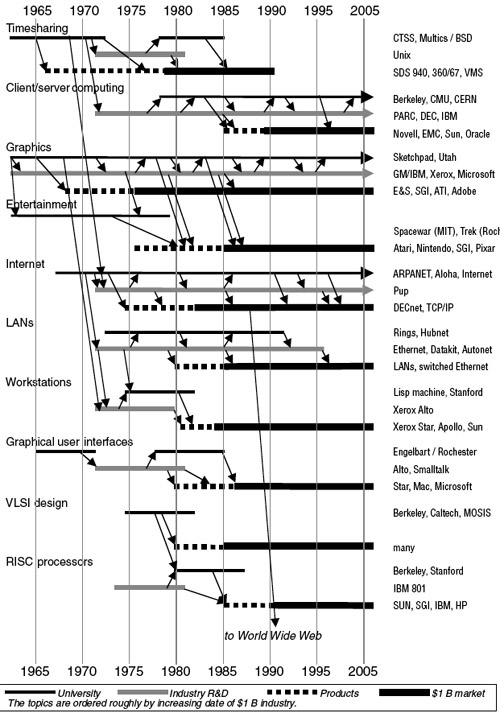 The 2001 report from the Computer Science and Telecommunications Board of the National Research Council (of the National Academies of the USA), Innovation in Information Technology, has interesting charts about how key technologies like the Internet benefited from government research support. See Figure 1. The report introduces the Figure thus,
The 2001 report from the Computer Science and Telecommunications Board of the National Research Council (of the National Academies of the USA), Innovation in Information Technology, has interesting charts about how key technologies like the Internet benefited from government research support. See Figure 1. The report introduces the Figure thus,
Figure 1 illustrates some of the many cases in which fundamental research in IT, conducted in industry and universities, led 10 to 15 years later to the introduction of entirely new product categories that became billion-dollar industries. It also illustrates the complex interplay between industry, universities, and government. The flow of ideas and people—the interaction between university research, industry research, and product development—is amply evident. (Chapter 1)



 We are adding
We are adding